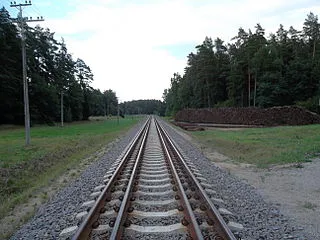xcalibur201
New member
Hello, people of trainz! I'm a guest in your community, I hope you don't mind my presence. I come to you with a question. For some reason, I'm interested in rail gauge, and have read into this a fair amount. When it comes to dual gauge, you can make a three rail arrangement with gauges that are far enough apart (eg cape gauge & standard), while for those close together, you need four rails (eg standard & russian). But I'm wondering, what is the limit? How different do rail gauges have to be to allow for a three-rail setup? It seems to be ~6 inches or so, but I'm not certain; also, is this limit different for broad vs narrow gauges? This information is surprisingly difficult to find, which is why I turn to the enthusiasts here.
(tl;dr: how far apart do rail gauges have to be to allow three-rail dual gauge?)
TIA
(tl;dr: how far apart do rail gauges have to be to allow three-rail dual gauge?)
TIA

